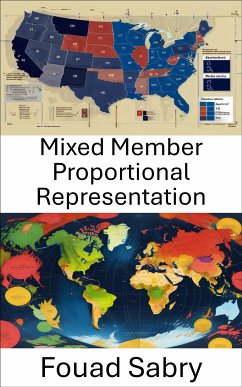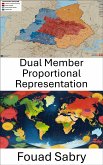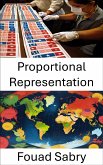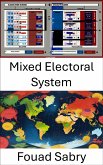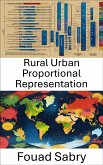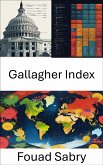"Mixed Member Proportional Representation" is an essential addition to the "Political Science" series, exploring the hybrid electoral system that merges single-member districts with proportional representation. This combination ensures both fairness and enhanced representation, reshaping political landscapes in various democracies.
Chapters Overview:
1-Understand the core of mixed-member proportional representation, its structure, and function.
2-Explore proportional representation and its role in fair elections.
3-Discover the additional member system and its balance in representation.
4-Learn about overhang seats and their effect on parliamentary makeup.
5-Study New Zealand’s pivotal electoral reform and its use of this system.
6-Compare parallel voting systems and their distinction from mixed-member proportional representation.
7-Analyze the 2007 Ontario electoral reform referendum and its implications.
8-Investigate New Zealand’s electoral system and its practical outcomes.
9-Review the results of the 2011 New Zealand voting system referendum.
10-Examine Germany’s successful use of mixed-member proportional representation.
11-Understand the broader importance of electoral reform in shaping democratic systems.
12-Gain insights into various electoral systems and their comparative strengths.
13-Discover Italy’s scorporo electoral mechanism.
14-Learn about dual-member proportional representation and its unique approach.
15-Explore the impact of mixed electoral systems in democratic enhancement.
16-Study the 2018 British Columbia electoral reform referendum.
17-Investigate rural–urban proportional representation and its effect on diverse regions.
18-Delve into Germany’s State Parliament and its use of this electoral system.
19-Understand the mixed single vote and its role in elections.
20-Learn about the mixed ballot transferable vote and its benefits.
21-Explore the characteristics of mixed-member majoritarian representation.
This comprehensive guide is ideal for professionals, students, and enthusiasts interested in the intricacies of electoral systems. It provides in-depth insights into the practical applications and impact of mixed-member proportional representation, offering answers to important questions surrounding modern electoral reforms.
Chapters Overview:
1-Understand the core of mixed-member proportional representation, its structure, and function.
2-Explore proportional representation and its role in fair elections.
3-Discover the additional member system and its balance in representation.
4-Learn about overhang seats and their effect on parliamentary makeup.
5-Study New Zealand’s pivotal electoral reform and its use of this system.
6-Compare parallel voting systems and their distinction from mixed-member proportional representation.
7-Analyze the 2007 Ontario electoral reform referendum and its implications.
8-Investigate New Zealand’s electoral system and its practical outcomes.
9-Review the results of the 2011 New Zealand voting system referendum.
10-Examine Germany’s successful use of mixed-member proportional representation.
11-Understand the broader importance of electoral reform in shaping democratic systems.
12-Gain insights into various electoral systems and their comparative strengths.
13-Discover Italy’s scorporo electoral mechanism.
14-Learn about dual-member proportional representation and its unique approach.
15-Explore the impact of mixed electoral systems in democratic enhancement.
16-Study the 2018 British Columbia electoral reform referendum.
17-Investigate rural–urban proportional representation and its effect on diverse regions.
18-Delve into Germany’s State Parliament and its use of this electoral system.
19-Understand the mixed single vote and its role in elections.
20-Learn about the mixed ballot transferable vote and its benefits.
21-Explore the characteristics of mixed-member majoritarian representation.
This comprehensive guide is ideal for professionals, students, and enthusiasts interested in the intricacies of electoral systems. It provides in-depth insights into the practical applications and impact of mixed-member proportional representation, offering answers to important questions surrounding modern electoral reforms.
